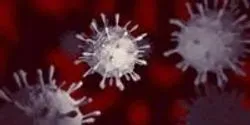News

Scientists have identified two unlikely partners in a type of immune cell called a macrophage that work together in response to cancer drugs to increase inflammation in a way that may alter tumor growth. Researchers from the National Institutes of Health published the study in the journal Cancer Research.

To Scott Muzenski, the large crack that weather and wear had caused in the driveway of a parking structure at the University of Wisconsin-Milwaukee (UWM) presented an opportunity to test his research.

A University of Alabama in Huntsville (UAH) biology professor's experiment that is set to fly to the International Space Station (ISS) could shed new light on the roles enzymes play in biological processes.

The San Diego Supercomputer Center (SDSC) at the University of California, San Diego, has implemented a new feature of the Globus software that will allow researchers using the Center’s computational and storage resources to easily and securely access and share large data sets with colleagues.

On April 10, the U.S. Environmental Protection Agency (EPA) announced research grants to Arizona State University and the University of California, Santa Barbara to better understand the impacts of chemicals and nanomaterials throughout their life cycle—from design, manufacture, use and disposal.

In a new study, researchers from North Carolina State University, UNC-Chapel Hill and other institutions have taken the first steps toward creating a roadmap that may help scientists narrow down the genetic cause of numerous diseases. Their work also sheds new light on how heredity and environment can affect gene expression.

Flu epidemics cause up to half a million deaths worldwide each year, and emerging strains continually threaten to spread to humans and cause even deadlier pandemics. A study by McGill University professor Maziar Divangahi published by Cell Press on April 10 in the journal Immunity reveals that a drug that inhibits a molecule called prostaglandin E2 (PGE2) increases survival rates in mice infected with a lethal dose of the H1N1 flu virus. The findings pave the way for an urgently needed therapy that is highly effective against the flu virus and potentially other viral infections.














